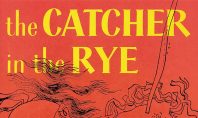The Power of Being Present
I am driving home from work, going the same way that I’ve always gone. My hands instinctively know by now to tilt the wheel a little bit to the right as I rumble over the first set of railroad tracks, to the left when I hit the second. I know which yellow lights are forgiving, where the potholes are, the construction schedule. Memory chauffeurs me home while I alternate between drafting an e-mail in my head and worrying about my father’s health to loathing myself for something stupid I said last week and stressing out about bills. Then I’m pulling up my driveway, mentally spent, with no recollection of how I even got home.
This is the 21st century human condition, but it doesn’t stop there. Even when we aren’t tempted by internal voyages to the deepest chasms of our minds, we’re plucked out of the present by our phones and our computers, our endless fleets of devices perpetually luring us to bask in their synthetic glow.
Here is how we live now: it’s no longer enough to just witness a great view, attend a concert, or go to brunch. It’s second nature to document everything while we’re doing it, some of us to the extent that we spend more time staring at a photograph of our activity than participating in the activity itself.
If we aren’t documenting, we’re talking, but not to the people we’re with. Couples and best girlfriends alike will post up for dinner or drinks and once they’ve settled on an appetizer or cocktails, their fingers reflexively reach for their phones, desperate for digital interaction. And, if we aren’t doing either of those things, we’re scrolling: scrolling through social media feeds, e-mail retail coupons, and brightly colored games, begging for a distraction. Anywhere but here—anything but now—will do.
We have more than we’ve ever had, but are we any happier? Is disconnection from the present the ironic tax we must pay for the ease of connectivity that we now take for granted?
Of course, it’s folly to suggest that happiness is hidden in focusing our undivided attention on a dull commute home or that sharing a snapshot online is making us miserable.
This isn’t about rejecting our problems or our technology; this is a call to action to not take action—to breathe, to take notice, to pause. To pause in our busy minds and our busy lives and appreciate the present while it’s here, while it’s ours. That moment in time, then. This moment in time, now. The next moment in time, when.
The power we have to choose what we think about—what we focus our attention on—is striking. The way we spend our moments is ultimately the way we spend our lives.
Lehigh Valley Yoga Teachers’ Tips for Staying Present
“Being present is an important priority in my life, so I have a few go-to tools that help me stick to my intention to be in the now. Noticing how my breath subtly moves my body usually prompts me to deepen my breath. Noticing sensations in my body reminds me that sensation is always changing, and this helps relieve any anxiety about the past or future. I also like to take pauses throughout my day to remember all of the things I have to be grateful for in the present moment.”
– Megan Ridge Morris
E-RYT 500, RPYT, YACEP, CD
“I try to practice mindfulness on a daily basis. This can be as simple as placing my hands over my heart to feel the rise and fall of my chest, or visualizing my breath in my body as a color. The inhales make that color bigger and brighter and the exhale makes the color smaller and dimmer. I put a count to my breath, inhaling on an odd number and exhaling on an even number. These mindful practices put space between my thoughts so that I can be present with how something makes me feel, reducing the urge to quickly react or judge a situation.”
– Melanie Smith
E-RYT 500
“One of my favorite yoga teachers once assigned the following homework during a yoga teacher training: ‘Go to the grocery store and stand by the apples. Don’t just pick the same old type of apple that you normally pick. Pause, breathe, and wait for it.’ This is the technique that I use all the time in every situation to be present. I trust my body and my instincts first. I also got to try my first Honeycrisp apple that day!”
– Carrie Morgan
E-RYT 500
“One of the things that helps me to stay present is gratitude. For example, if I find myself feeling stressed about traffic, I can bring my awareness to gratitude for my car and keeping me safe. Doing housework, I can be mindful and grateful of a place to live and people to love. I also stay present by slowing down and ‘naming’ things, like ‘I breathe in, I breathe out’ or ‘I am walking up the steps.’”
– Deanna Marie Nagle
Director of Teacher Training at The Yoga Loft of Bethlehem
E-RYT 500, YACEP
“I try to keep my mind on what’s in front of me, even if I know what’s coming. ‘Just breathe’ can sound so trite, but it really is the best tool we have in such a busy world. Taking the time to pause and appreciate the incredible power our breath holds and the incredible power we hold in determining presence or chaos—it’s sweet stuff.”
– Britt Tagg
E-RYT 200
“I connect different visuals to the flow of my breath when my mind starts to wander. I picture a favorite color moving from the soles of my feet to the crown of my head as I inhale, then moving from the crown to my feet as I exhale. I also imagine my breath inhale slowly from a valley to the peak of a mountain, then slowly exhale from the peak back down to the valley.”
– Sally McNeil Delisle
E-RYT 500, RCYT







